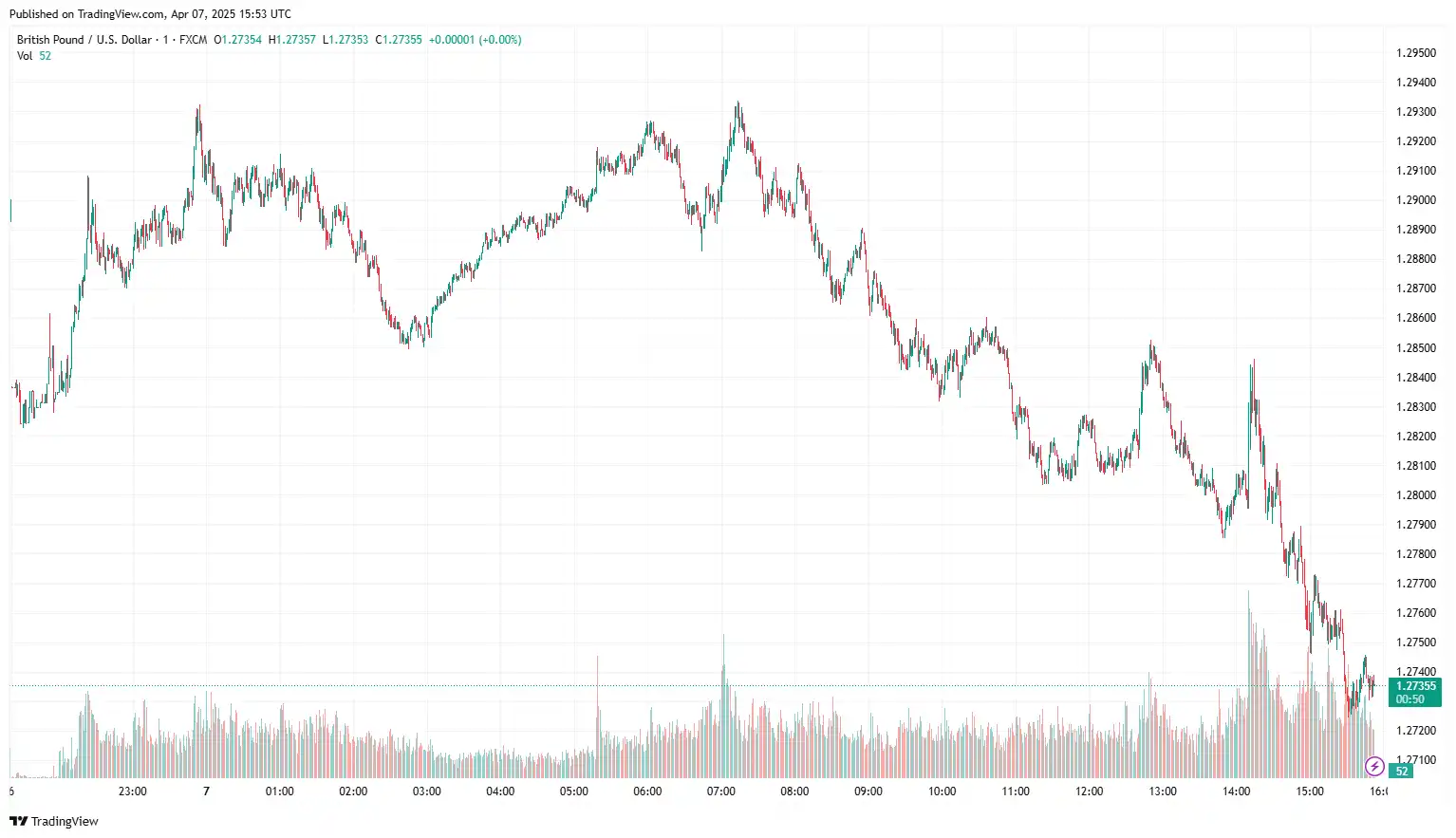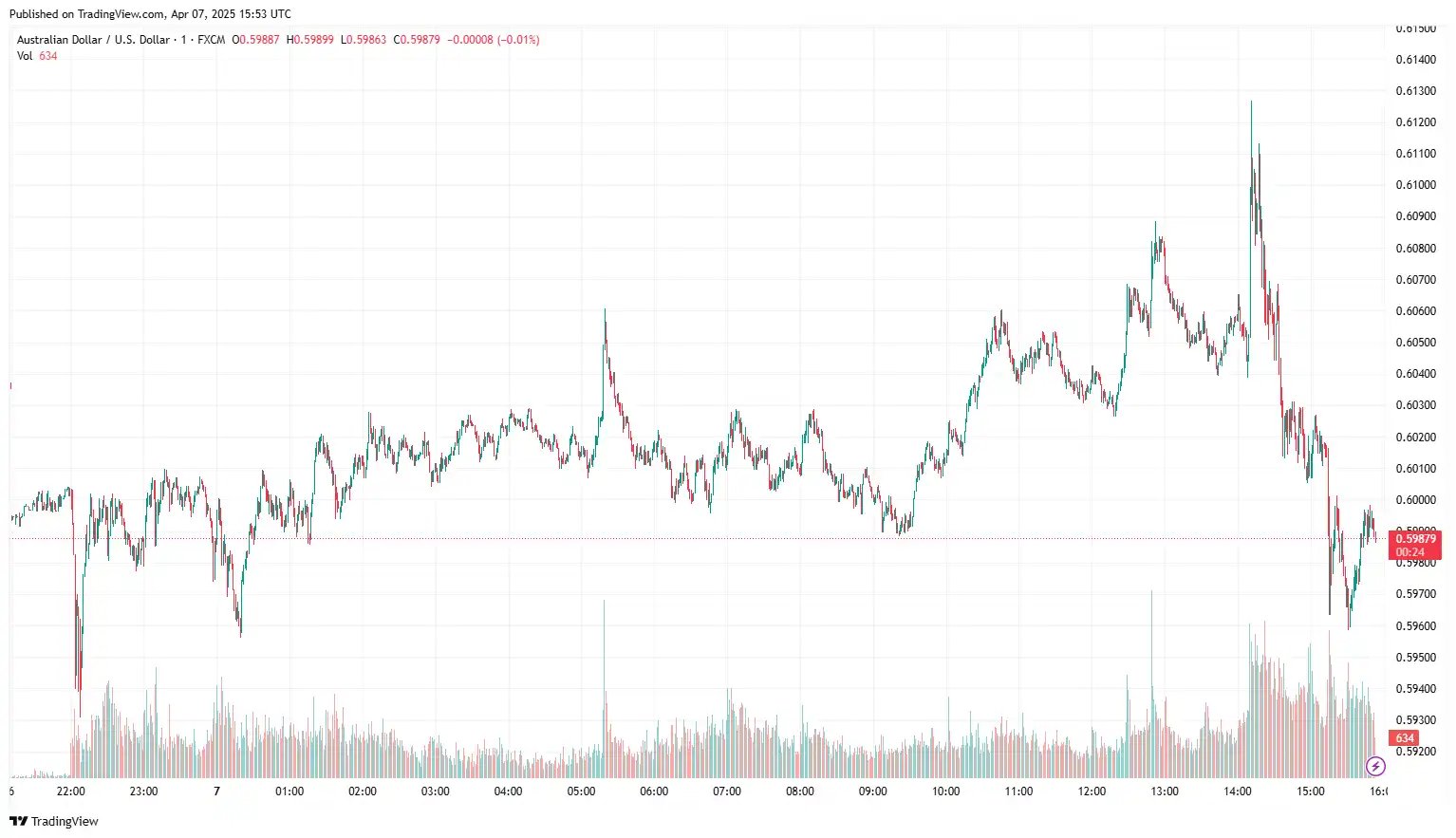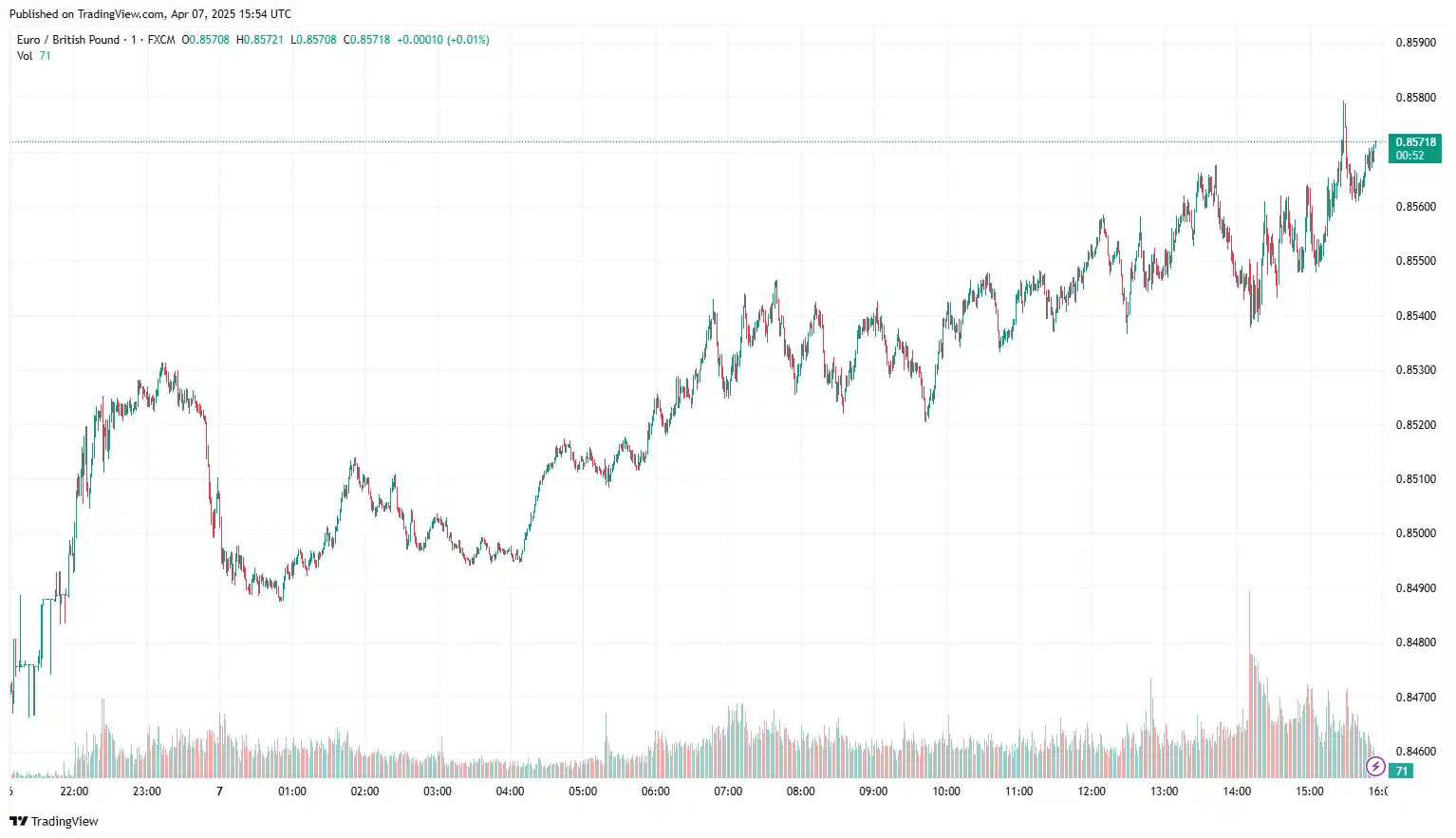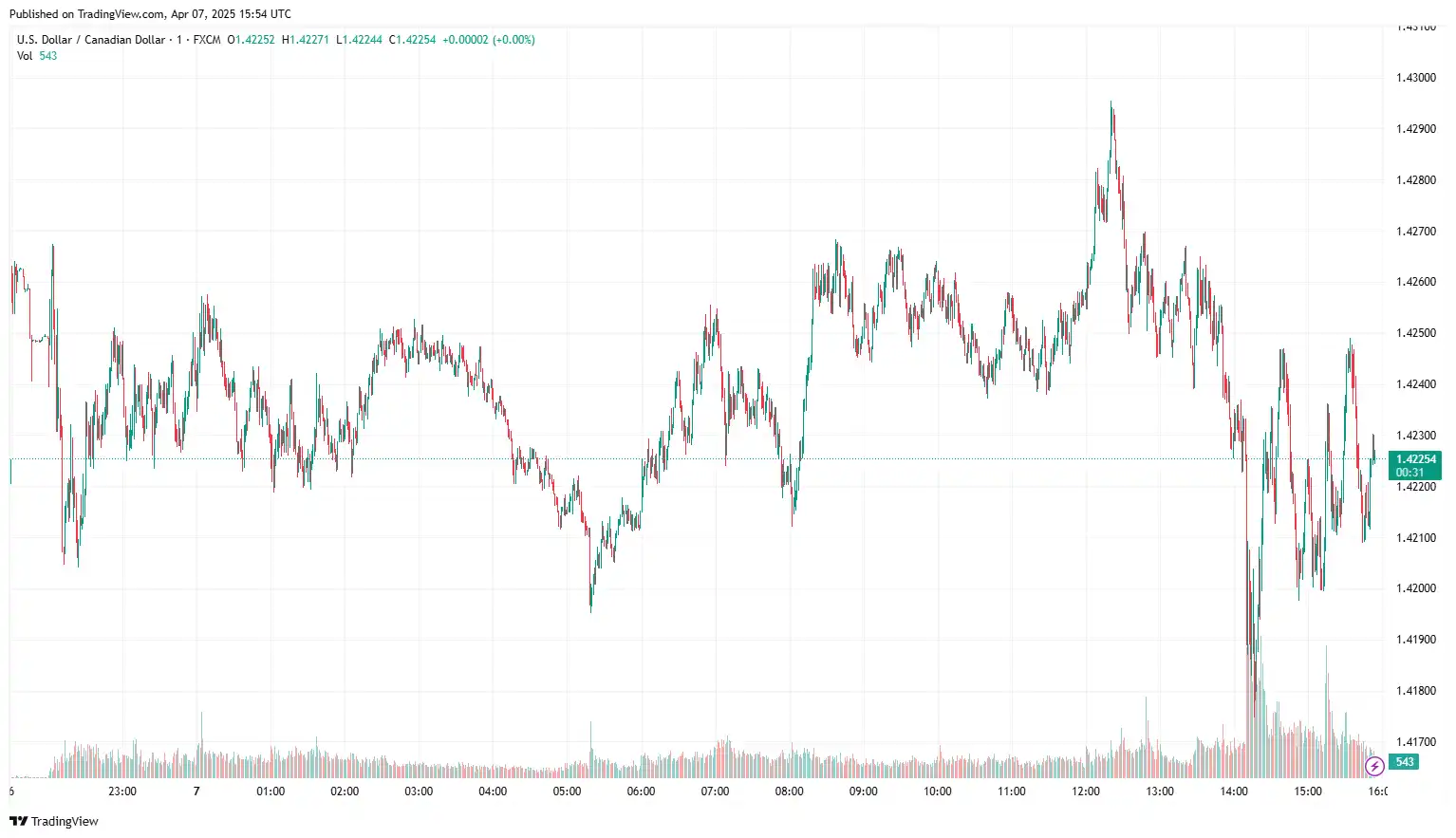GBP/USD Stumbles Amid US Economic Uncertainty
GBP/USD struggles near 1.2877 amid the rising uncertainty around the global economic outlook. Last Wednesday, US President Donald Trump announced broad reciprocal tariffs, sparking concerns about an escalating trade war that may negatively impact global growth. This situation significantly affects investor sentiment, as reflected in the pervasive red seen across global equity markets. UK firms are likely to face heightened competition in the global market as businesses from countries impacted by higher US tariffs seek alternative markets for their products. This could further pressure the UK economy, which is already grappling with tight financial conditions. The Bank of England (BoE) continues to take a cautious approach to monetary policy, with inflation still well above the 2% target. Inflationary pressures, particularly from rising energy prices, are expected to persist, and the BoE has warned that price increases could continue before inflation returns to the desired path. UK Prime Minister Keir Starmer has committed to supporting domestic businesses, vowing to use industrial policy to shield them from the effects of Trump's tariffs. He also emphasised the importance of strengthening alliances and reducing trade barriers to mitigate potential damage.
Conversely, a better-than-expected US Nonfarm Payrolls (NFP) report and the hawkish remarks from Federal Reserve (Fed) Chair Jerome Powell have bolstered the US dollar. The March NFP figures revealed that US employers added 228K jobs, exceeding the forecast of 135K and the prior count of 117K. Nonetheless, the Unemployment Rate rose to 4.2%, slightly above both the prediction and the earlier figure of 4.1%. Average Hourly Earnings increased by 3.8% year-on-year, falling short of the projected 3.9% and the prior growth of 4%. US President Trump stated that no deal with China would occur unless the trade deficit is addressed. He noted that "sometimes you have to take medicine" regarding recent market fluctuations, denying any intent to provoke a selloff. US Commerce Secretary Howard Lutnick confirmed that tariffs will not be delayed and are expected to remain effective in the coming weeks. Fed Chair Powell acknowledged that Trump's tariffs could significantly impact inflation and the economy but emphasised that the Fed won't change policies now. Powell mentioned that inflation is slightly above target, and the Fed aims to prevent temporary price hikes from becoming permanent. The central bank is monitoring the administration's trade policy risks, with many anticipating interest rate cuts could be delayed until June. However, markets are pricing in a 1% cut by year-end, with some forecasting a fifth reduction, which might pressure the dollar further.
In the upcoming sessions, key factors such as the recent Federal Open Market Committee (FOMC) minutes, the release of inflation figures, the Fed's monetary policy outlook, the UK's monthly Gross Domestic Product (GDP), and February's factory data will impact the GBP/USD exchange rate.

AUD/USD Softens Amid US-China Tariffs War
AUD/USD weakened near 0.6016, as the Australian dollar reacted to China's imposition of a 34% tax on all US imports in retaliation for US President Donald Trump's tariffs, raising fears of a trade war between the United States and China. On Friday, China responded to Trump's tariffs by declaring that it would implement a 34% tax on all imports from the US starting Thursday. This represents Beijing's strongest retaliation in the ongoing trade war initiated by the American leader. On Sunday, US President Trump stated that a deal cannot be reached unless addressing the trade deficit with China. He further noted that "sometimes you have to take medicine" in response to questions about recent market fluctuations, asserting that he did not intend to cause a selloff. US Commerce Secretary Howard Lutnick verified on the same day that the tariffs will not be delayed, and this policy will be upheld for the coming days and weeks.
On the data front, Friday's US Nonfarm Payrolls (NFP) surpassed expectations in March, increasing by 228,000 from a revised 117,000 in February. In contrast, the Unemployment Rate rose to 4.2% in March, up from 4.1% previously, exceeding the forecast of 4.1%. Average Hourly Earnings, an important indicator of wage growth, increased moderately by 3.8% year-over-year, falling short of the expected 3.9% and down from the previous figure of 4%. Fed chair Powell noted that Trump's tariffs could exert a stronger-than-expected inflationary and economic effect, although policy adjustments are currently on hold. He mentioned that inflation is approaching the target but remains somewhat elevated, emphasising the Fed's responsibility to prevent temporary price increases from evolving into persistent inflation. Furthermore, Powell indicated that the Fed is keeping an eye on the uncertainties posed by the Trump administration's trade policies. The Federal Reserve (Fed) officials may delay cutting interest rates until June, following a stronger-than-anticipated jobs report from last month that alleviated worries about the labour market. Nevertheless, the markets are still pricing one percentage point in Fed rate cuts by the end of the year, with some predicting a fifth reduction. These increasing expectations for further Fed rate cuts could pressure the greenback.
On the other hand, the Australian Dollar (AUD) fell sharply as the market sentiment changed towards RBA rate expectations in response to Trump's sweeping new tariff package. Besides increasing RBA dovish expectations, concerns about a possible trade war between the US and China will continue to weigh heavily on the risk-sensitive Aussie.
Broader market sentiment regarding the potential US recession and US-China tariff conflicts will drive the AUD/USD exchange rate.

EUR/GBP Rebounds On Cautious Market Tone
EUR/GBP recovered near 0.8539, as the euro edged higher against the British pound, following the demand for the safe-haven single currency. However, the euro's upside may be limited by the ongoing risks of further escalation in the trade war between the US and the European Union (EU). The EU faces 25% import tariffs on steel, aluminium, and cars and reciprocal 20% tariffs on nearly all other goods. In response, the European Commission is set to propose a list of US products that will face additional duties by the end of Monday. On the same day, European Central Bank (ECB) policymaker Yannis Stournaras warned that "Trump tariffs risk a significant euro-area demand shock," according to the Financial Times. He further stated that the looming global trade war could substantially impact Europe's economic growth, with the negative effects potentially reducing Eurozone growth by 0.5 to 1 percentage.
On the economic data front, investor sentiment in the Eurozone worsened in April, with the Sentix Investor Confidence Index falling sharply to -19.5 from -2.9 in March. Germany's industrial sector showed signs of contraction in February, with industrial output falling 1.3% month-on-month (MoM), worse than the expected 1.1% decline and a sharp contrast to the 2% rebound in January. Germany's industrial production dropped 4% year-on-year (YoY) in February, compared to January's 1.6% decrease. Meanwhile, Germany's trade balance for February came in at EUR 17.7 billion, just slightly below the EUR 17.8 billion expected, but higher than the previous figure of EUR 16 billion. In contrast, the Eurozone's retail sales grew by 2.3% YoY in February, surpassing the market expectations of 1.8%. However, on a month-to-month basis, retail sales only increased by 0.3%, underperforming the estimated 0.5% rise. Germany's Factory Orders held steady in February, signalling stagnation in the manufacturing sector. In February, contracts for products marked 'Made in Germany' were unchanged at 0%, following a revised decline of 5% in January. This performance was below the anticipated 3.5%. Additionally, Germany's Industrial Orders saw a year-over-year drop of 2% in February, compared to a previous upward adjustment of 1%.
Conversely, Sterling faces mounting pressure due to rising global economic uncertainty following US President Trump's announcement of reciprocal tariffs. As a result, UK businesses are experiencing heightened competition, particularly from companies in countries affected by the tariffs, which are now looking for new market opportunities. The UK economy, already dealing with tight financial conditions, now encounters additional obstacles. The Bank of England (BoE) remains careful, with inflation significantly exceeding the 2% target, mainly due to increasing energy prices. The BoE has indicated that inflationary pressures might linger before aligning with the target, hinting at a lengthy period of economic adjustment. In light of this, UK Prime Minister Keir Starmer has vowed to safeguard domestic businesses from the repercussions of Trump's tariffs, promising to implement industrial policies that bolster UK firms and lessen trade restrictions.
In today's session, German Industrial Production and Trade Balance data, followed by the Eurozone Sentix Investor Confidence and global risk sentiment, will influence the EUR/GBP exchange rate.

USD/CAD Struggles on Weak Oil And Jobs Data
USD/CAD hovered near 1.4238, following stronger-than-expected Canada's unemployment rate and falling crude oil prices, undermining the Canadian Dollar (CAD). Statistics Canada reported on Friday that Canada's unemployment rate rose to 6.7% in March from 6.6% in February, aligning with market expectations. During this period, employment decreased by 32.6K, a sharp decline from February's increase of 1.1K. The report also indicated a slight drop in the Participation Rate to 65.2% from 65.3%, while Average Hourly Wages increased by 3.5% year-over-year, down from the 4% rise noted in February. A downturn in Canada's labour market stems from Canadian firms adopting a cautious business outlook in anticipation of the reciprocal tariff announcement by US President Donald Trump, leading to adjustments in their staffing levels. The risk of escalating trade tensions between the US and Canada will continue to affect the Canadian dollar.
On Thursday, Canadian Prime Minister Mark Carney responded to US President Donald Trump's extensive tariff package by outlining Canada's countermeasures, which he referred to as indicators of US adherence to the USMCA (formerly NAFTA) agreement. Additionally, he declared that Canada would enforce a 25% tariff on all vehicles imported from the United States that do not comply with the USMCA trade deal requirements. Crude oil prices have fallen to a four-year low due to escalating fears that US President Donald Trump's extensive reciprocal tariffs could start a full-scale global trade war and reduce fuel demand. Additionally, the political uncertainty leading up to Canada's snap election on April 28, compounded by disappointing domestic data, is putting pressure on the commodity-linked Loonie.
In contrast, a better-than-anticipated US Nonfarm Payrolls (NFP) report and the hawkish comments from Federal Reserve (Fed) Chair Jerome Powell bolster the greenback. The US Nonfarm Payrolls (NFP) data for March exceeded estimates by a significant margin. US firms hired 228K new workers, well above the estimated 135K and the previous figure of 117K. However, compared to expectations, the unemployment rate ticked up to 4.2%, and the prior release was 4.1%. Average Hourly Earnings grew moderately by 3.8% year-on-year, falling short of the expected 3.9% and the earlier reading of 4%.
In the upcoming session, the BOC Business Outlook Survey, Canadian Ivey PMI figures, US inflation figures, and speeches by influential FOMC members will provide fresh impetus for the USD/CAD exchange rate.

Stay Ahead in the Currency Game
Whether you're a daily FX trader or handle international transactions regularly, our 'Currency Pulse' newsletter delivers the news you need to make more informed decisions. Receive concise updates and in-depth insights directly in your LinkedIn feed.
Subscribe to 'Currency Pulse' now and never miss a beat in the currency markets!
Ready to act on today’s insights? Get a free quote or give us a call on: +44 (0)20 7740 0000 to connect with a dedicated portfolio manager for tailored support.
Important: This blog is for informational purposes only and should not be considered financial advice. Currency Solutions does not consider individual investment goals, financial circumstances, or specific requirements of readers. We do not endorse or recommend any particular financial strategies or products discussed. Currency Solutions provides this content as is, without any guarantees of completeness, accuracy, or timeliness.




